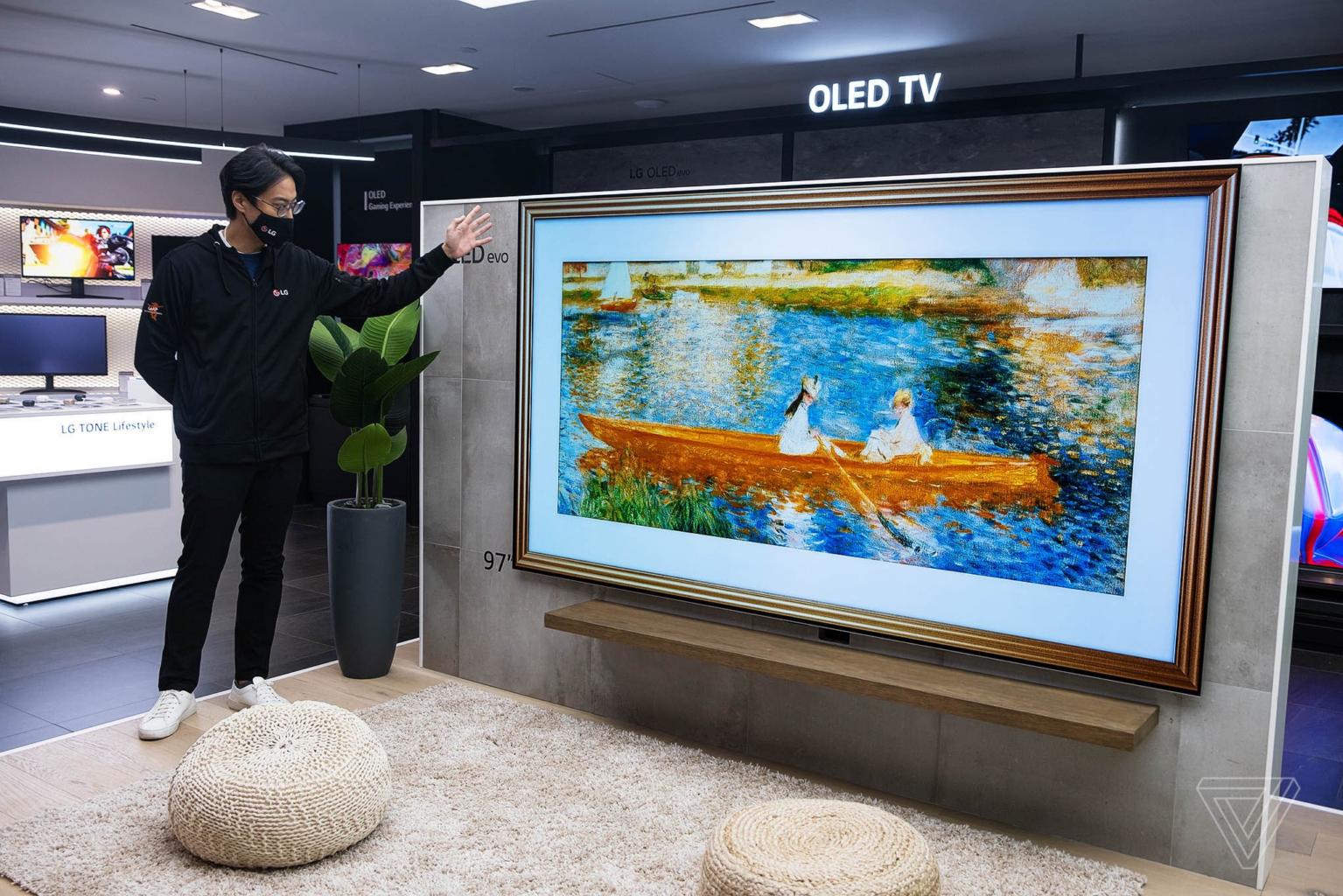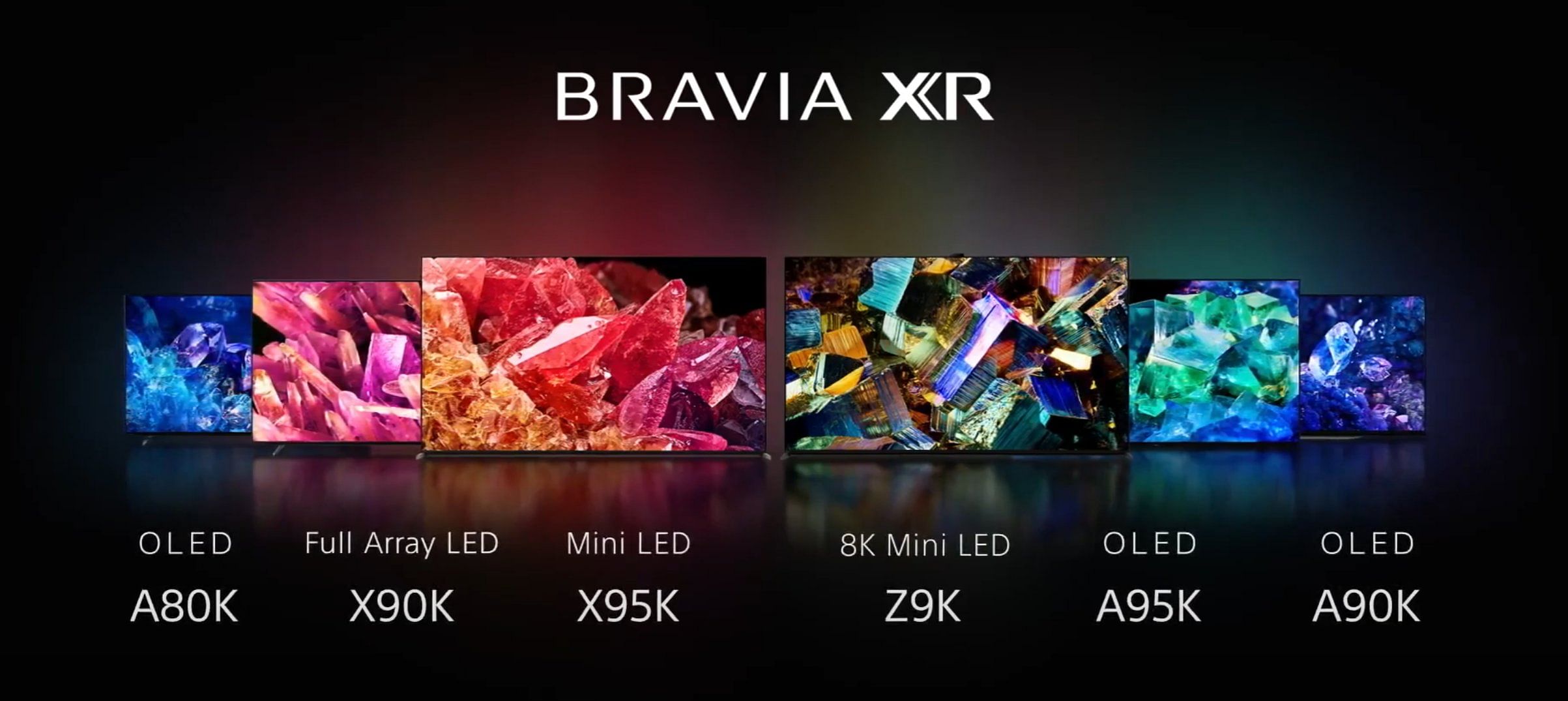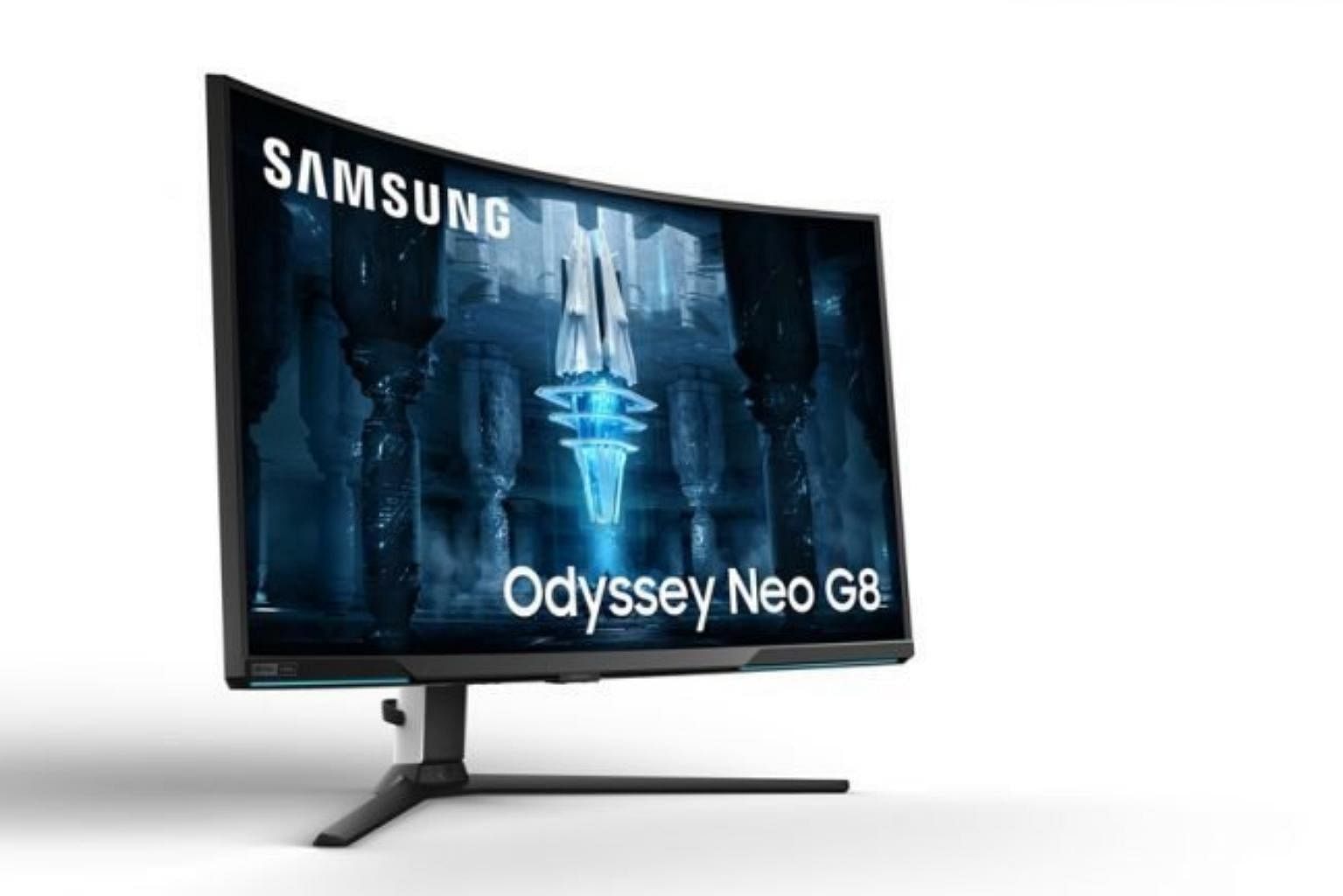Bigger, sharper displays and laser projectors dominate CES 2022
Sign up now: Get ST's newsletters delivered to your inbox

LG announced the world's largest Oled TV at 97 inches at CES 2022.
PHOTO: BIG GEEK/TWITTER
Follow topic:
LAS VEGAS - TV makers are rolling out ever larger displays with recent advances in digital technologies, catering to consumers' demand for bigger screens.
While Oled screens are mostly offered in 50- to 70-inch sizes currently, recent advances in manufacturing techniques have allowed even larger panels to be made without compromising image quality or pushing cost to unfeasible levels.
At CES 2022, the latest edition of the world's biggest tech show, South Korean electronics giant LG, whose subsidiary LG Display is known for supplying Oled panels to other brands, announced the world's largest Oled TV at 97 inches.
Over the last two years, 65-inch and 75-inch TVs have shown rapid growth, according to Hisense US senior director of product and brand marketing Douglas Kern.
The TV market as a whole saw 7 per cent growth over that period in the 65-inch and above category, he told a press conference on Tuesday (Jan 4) at CES 2022.
"Hisense experienced this industry trend directly and grew US unit sales in the 65-inch and above category by 41 per cent year on year," Mr Kern added.
But users without the space for such mammoth screens have not been forgotten. LG also announced the world's smallest Oled TV with a new 42-inch model - also a world first - made for more compact homes.
LG and Hisense were among the brands that held press conferences on Tuesday announcing their latest products that will debut at CES this year, which officially opens on Wednesday and will run till Friday.
Other brands like Samsung, Panasonic and Sony also announced a slew of new TVs and gaming monitors on Tuesday. Here are some highlights.
1. LG launches world's biggest - and smallest - Oled TVs
Oled TVs have been gaining popularity over traditional LCD displays in recent years, promising better image quality thanks to their self-lit pixels.
But this comes with higher price tags and more limited screen size options for Oled displays compared to the older LCD technology, due to a more complex manufacturing process.
This year, LG is offering consumers more options in the high-end TV market with the launch of its new G2 series models, including a new 83-inch model and a massive 97-inch model.
The G2 series previously consisted of 55-inch, 65-inch and 75-inch options.
LG is also pushing the limit in the opposite direction with a new 42-inch model for its mainstream C2 series of Oled TVs. It said this is the world's smallest Oled TV, and is suitable for console and PC gaming in small spaces.
The C2 line-up offers five other size options ranging from 48 inches to 83 inches.
The new TVs will also come with gaming-oriented features like quick access to presets and settings like G-Sync, FreeSync and variable refresh rate in the "game optimiser" menu.
LG also announced a new "always ready" mode for some of its TV models - including the G2 series, but not the C2 series.
This mode turns the screen into a "digital canvas" for displaying artwork, showing the time or playing music while the TV is not in use.
The new G2 and C2 models should go on sale globally from March. LG has not yet announced pricing details.
Other brands that revealed new Oled TVs are similarly offering larger options this year.
Panasonic's new flagship LZ2000 model, for instance, now has a 77-inch option. It previously offered only 55-inch and 65-inch models.
2. Mini-LED and QD-Oled displays go mainstream
While Oled screens are making gains in the market, "mini-LED" is a recent innovation that promises to keep LCD displays around for some time to come.
Unlike Oled displays, LCD displays are not self-lit and rely on a backlight. However, traditional LEDs can create undesirable effects like uneven lighting and light bleed.
Mini-LED displays are essentially LCD displays with smaller and denser backlight LEDs. This enables more precise dimming to create higher contrast images, allowing for better black levels and more accurate colours.
One advantage of mini-LED displays over Oleds is higher peak brightness - up to 2,000 nits of luminance.
By contrast, Oleds typically put out 500 to 600 nits and top out at about 1,000 nits.
LG is expanding its mini-LED offerings with additions to its "QNED" line-up, which it debuted last year.
Four of its new QNED models will come with mini-LED technology in 75-inch and 85-inch sizes.
Hisense is also going big on mini-LED, introducing the technology into its flagship U9H series and midrange U8H series. Both series will offer 75-inch models, 4K resolution and 120Hz refresh rate, with the U9H boasting higher peak brightness levels.
Similarly, Sony is introducing mini-LED TVs to its Bravia line-up for the first time, including the 8K-resolution Z9K model and the 4K-resolution X95K model.

Another new innovation making its debut at CES 2022 is Samsung's QD-Oled panels, which won a CES 2022 Innovation Award.
This new tech combines the "quantum dot" colour technology more commonly seen in LCD TVs with the strengths of an Oled display.
Quantum dots are tiny manmade crystals that emit light at different wavelengths when struck with ultraviolet rays, depending on their size. This means very specific colours can be created by varying the size of the dots.
Sony also announced that its new flagship Bravia XR A95K TV will feature Samsung's QD-Oled panels.
3. Gaming monitors and laser projectors make strides
Meanwhile, Dell's Alienware brand will debut the first gaming monitor with a QD-Oled panel.
Its 32-inch AW3423DW will go on sale in March, but prices have not yet been announced.
Not to be outdone, Samsung announced another world first of its own in the form of a beast of a mini-LED gaming monitor.

It claims its new 32-inch Odyssey Neo G8 is the world's first mini-LED display to run at 4K resolution with a 240Hz refresh rate.
The new monitor features a curved screen that uses LEDs 40 times smaller than traditional LEDs and can put out up to 2,000 nits of brightness.
In another world first, Hisense revealed what it says is the first "laser TV" with 8K resolution.
This refers to a short-throw laser projector for home cinemas, which comes bundled with 120-inch screen.
Unlike most other brands at CES that tend to keep pricing information close to the chest, Hisense revealed its new laser TV will cost about US$5,999 ($8,100) when it goes on sale later this year.

